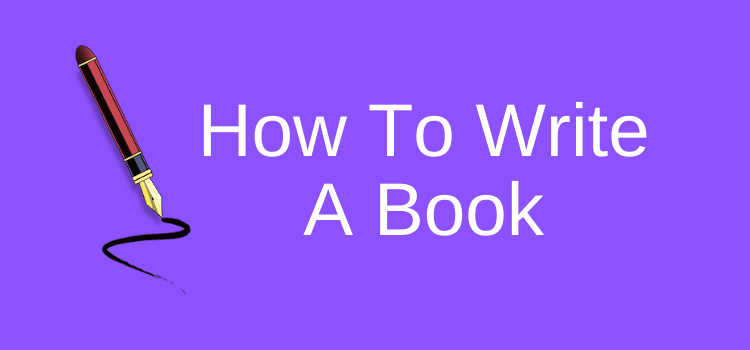
You always want to give your writing more punch, and finding ways to end a sentence is one of the best.
Strong sentence endings can be more memorable, or create a rhythm to your writing to help keep your readers’ interest. You can leave them hanging in suspense, create emphasis, bring closure, or use a word you want them to remember.
Weak endings are ones that might trail off with filler words or lose focus on the subject at hand. All they can do is dilute your message. It’s a bit like the setup for a joke, but with no punchline.
That’s why you shouldn’t leave your endings to chance. You always have options to help you write better.
Why sentence endings matter
Writers often concentrate on how they start a sentence, but sometimes don’t give enough thought to how to end a sentence effectively.
A strong sentence can leave something memorable at the end. Readers never pause at the beginning of a sentence, but they might do so at the end if you can create an impact or food for thought.
That’s why sentence endings can carry more weight, because a reader might linger for a moment.
The “recency effect” is a well-known psychological tendency for people to remember the last item in a list more often than information at the beginning or middle.
It means that stronger sentence endings have more chance of sticking in a reader’s mind.
Here’s a quick example. She opened the letter from her lawyer and began reading. vs. She opened the letter from her lawyer; her hands trembling.
The second sentence delivers an emotion or sense of trepidation instead of simply a routine action. It also urges a reader to find out what happens.
When writing dialogue, the last utterance can have a powerful effect. The last word in an exchange can charm, shock, or sting.
Even if you write nonfiction, the end of your sentences can make a point more noteworthy or memorable. Compare: Our policy reduces expenditure. vs. Our policy reduces expenditure dramatically. That last word changes the whole meaning of the sentence.
When you end a sentence, it’s more than a punctuation stop. It’s a chance to write something readers will remember.
15 Practical ways to end a sentence
When you get to the final words in any sentence, you want to try to make them stick in your readers’ minds.
You might want them to pause for thought, add some extra punch, create an emotion, or strengthen your meaning.
You have so many options you can use to help with tone or even the rhythm of a sentence.
The last thing you want is for a sentence to fizzle out at the end because it says nothing.
If you are not sure where to start, here are some concrete examples you can use to add more variety and style. You can choose to build a bit of suspense, slow down the pace, or give your readers something to reflect upon.
Take a look at the following fifteen structures and techniques you can try to improve your sentence endings.
1. End with a strong noun
Nouns are powerful because they can leave a clear image in a reader’s mind. Ending with one creates instant focus.
She knew that her greatest asset was patience.
His words echoed across the nation.
2. Finish with an action verb
Verbs do things, so placing them at the end indicates an imminent or immediate action.
He sat in a crouch, waiting for his moment to strike.
The only options were to capitulate, or escape.
3. End with a cleft sentence
A cleft sentence (starting with “It is/was…” or “What…”) lets you move the key idea to the end.
What he feared most was failure.
It was courage that brought her victory.
4. Create rhythm with repetition
If you repeat a word at the end, it can build emphasis or flow
All she wanted was freedom — true freedom.
They had been warned again and again and again.
5. Leave a question hanging
Ending with a question engages the reader and keeps them thinking.
What if this was going to be the last time?
Could she trust him after everything he had done?
6. Close with contrast
Set up an idea, then flip it on its head at the end.
He had promised her forever, but delivered nothing more than yesterday.
She was calm on the surface, yet inside she was boiling with anger.
7. End with an emotion
Placing a feeling at the end of a sentence can delve into emotions.
His voice trembled with sorrow and regret.
Her memories always rekindled happiness.
8. Leave it open-ended
Sometimes, a phrase trailing off with an ellipsis can create mystery or suspense.
She stepped into the unknown and…
He wanted to explain, to beg, to plead, but the words never…
9. Use imagery
A sensory detail makes your sentence vivid and memorable.
The air smelled of death and rotting flesh.
Her skin felt the sting of ice, as sharp as broken glass.
10. Hit hard on a key idea
Emphasize the most important word by saving it for last.
Above all else, she wanted love.
In the end, there was only the fear of failure.
11. Try parallel structure
Repetition using parallelism can create a rhythm and a memorable phrase.
He came, he fought, he won.
She searched, she suffered, she endured, and she survived.
12. Add a twist
Surprise the reader with an unexpected final word or phrase.
She was ready for absolutely anything, except rejection.
The letter was signed, sealed, and then never sent.
13. End with dialogue
Dialogue tags can feel immediate and human.
“So this is where it ends,” she cried.
“Promise me,” he whispered, as though it would keep her alive.
14. Break a grammar rule
A fragment at the end can hit harder than a perfect sentence.
Hatred. Nothing but hatred.
Broken. Shattered. Gone. Forgotten.
15. End with an Echo
This technique is an epistrophe, which gives rhythm to your writing.
She wanted independence, searched for independence, and at last, found independence.
He feared the night, cursed the night, and finally surrendered to the night.
Examples of strong sentence endings in literature
Taking a few clues from novels and even short stories can always help your inspiration.
Here are a handful of examples for you to ponder.
From The Great Gatsby, F. Scott Fitzgerald ends his novel with this sentence: “So we beat on, boats against the current, borne back ceaselessly into the past.”
It builds, almost like a tide, with the final phrase landing the inevitability. It doesn’t just end the sentence; it echoes the theme of the story.
Type: echo/repetition with imagery.
In Jane Austen’s Pride and Prejudice, she shows how endings can deliver resolution with grace.
She closes one of her most famous lines with: “…I must learn to be content with being happier than I deserve.”
The power lies in that final word deserve. It captures the character’s humility and growth.
Type: emphasis on a strong noun.
Short stories also display the power of sentence endings. In Katherine Mansfield’s The Garden Party, the last line reads: “Isn’t life—” she stammered.
Breaking off mid-thought, it uses the ending not as an end but as an opening, leaving readers reflective about the meaning.
Type: open-ended ellipsis/trail off.
Poetry often uses strong endings. Here’s Robert Frost’s Stopping by Woods on a Snowy Evening: “…And miles to go before I sleep.”
Type: End with a verb.
Cormac McCarthy’s The Road demonstrates how a sharp, simple ending can add impact.
One of the final lines reads: “He walked out in the gray light and stood and he saw the boy.”
Type: End with a noun.
These examples might remind you that the last few words should never be an afterthought.
It’s the place where meaning can linger, and sometimes more important than the sentence itself.
Summary
You don’t have to use every example I have given in everything you write.
Think of them as food for thought, and as tools you can fetch when you want to add more variety or emphasis.
Try experimenting with some of them in your drafts, and hopefully you’ll notice how they can make your writing stronger.
A well-placed ending closes a sentence, but it can also open the door for the following one.
Strong beginnings to sentences can draw readers in, but strong endings are what make them keep reading.
Related Reading: How To Use Word Order For Impact In Writing
Share This Article


